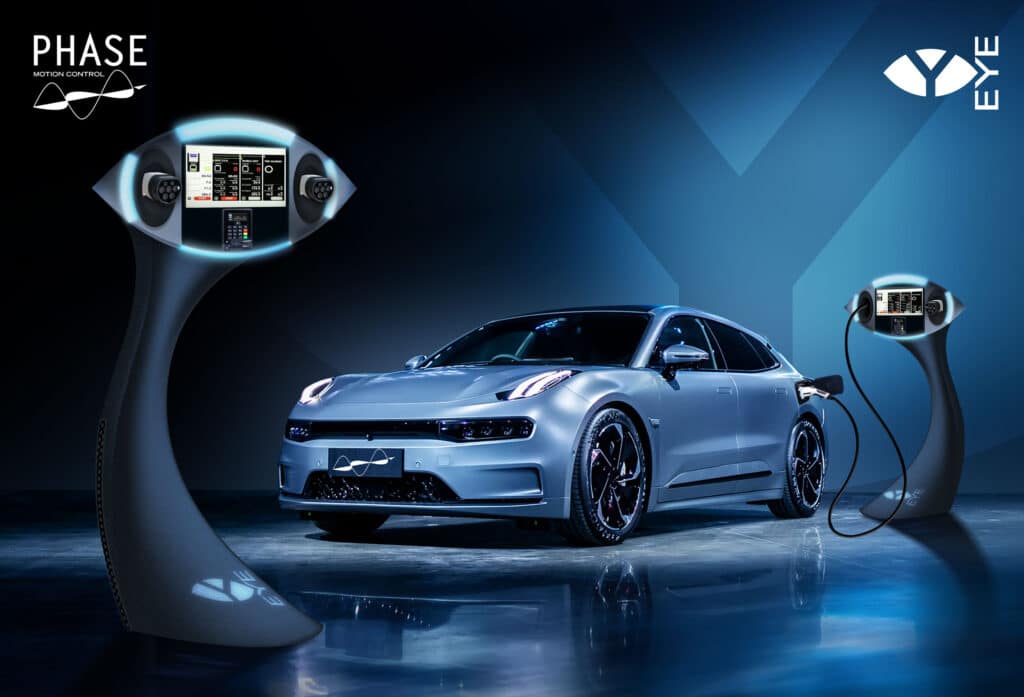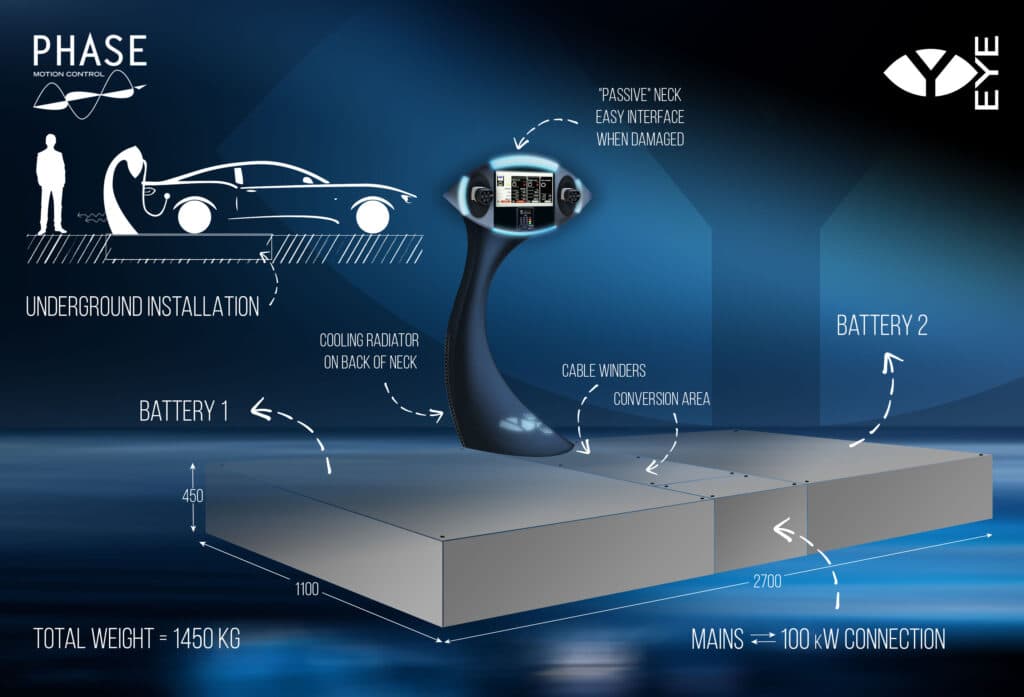The connection of more and more renewable energy generation on the grid requires a corresponding, enormous increase of storage capacity to match the timings of supply and demand.
This would represent a huge investment required of Utilities.. or could be a free side advantage from the diffusion of electric vehicles. In fact, statistically, electric vehicles may be modelled as a huge battery on wheels, most of the time stationary and potentially grid connected.
A dedicated Phase R&D team was dedicated from 2019 to make this potential a reality, working on two main areas:
Ultrafast chargers for EVs with storage
Bi-directional charging stations with remote control via 5G.
Ultrafast chargers: The widespread diffusion of EVs critically depends on the ability to refuel in a few minutes. State of the art batteries make this possible, but a ultrafast charger infrastructure is still mostly lacking. The main reason is that to charge an EV in a few minutes requires a very high peak power from the electricity supply, which means typically a medium voltage, megawatt scale connection. Even where the supply infrastructure exists, the required investment is significant. This is acceptable for busy motorways, but near impossible in more rural areas where traffic is not intense.
For this reason, Phase R&D has been experimenting with ultrafast chargers which incorporate a large battery. The load on the supply is constant and low, and the peak power for ultrafast charging is supplied by the built in battery. This system is also suitable for combining with a local solar or wind generating plant. The line-battery interface is bidirectional, so that the station can also offer stabilization and storage service on the grid.
The technology was thoroughly stress tested on the racetrack, where eV competitions take place and where recharging fast is a must. This experience fashioned the future EYE, the ultrafast next generation technology charging station.







Home » R&D Research and Development » Lessening climate change through renewables and electrification: the role of electric vehicles